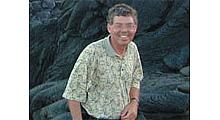FCC Website Explains Incentive Auctions

Doug Lung
Last week the FCC announced its Learn Everything About Reverse Auctions Now (LEARN) web site to “provide broadcasters and all stakeholders with valuable information about business opportunities created by the incentive auction, as well as the proposed incentive auction process.”
If you’ve followed my previous articles on the spectrum auctions, you won’t find anything new here. If you haven't, the Incentive Auction Staff Summary on the LEARN site provides an easy-to-read description of the NPRM.
One thing I noticed is that all the spectrum repacking examples used the split band approach, in which both the wireless and TV broadcast spectrum is split into two UHF bands. Wireless downlink would be a nationwide allocation starting at TV Channel 36 and moving downwards, and uplinks would be a regional allocation (varying nationwide) starting at TV Channel 51 and moving downwards. While this could allow the FCC to auction more spectrum (the upper TV band would provide the duplex gap), it could reduce the amount of spectrum available for white space devices and possibly wireless microphones that would otherwise be able to use the duplex gap created in a single “Channel 51 down” band plan.
While the summary provides a good idea of what’s in the NPRM, it doesn't detail all the options listed in the NPRM. Fortunately the LEARN Webpage also provides a like to the entire Broadcast Television Spectrum Incentive Auction NPRM.
As previously reported, there appears to be some concern among wireless carriers about the viability of the FCC's split band approach. We should see if these concerns are real after the major wireless carriers file their comments. I'll review them next week.
Get the TV Tech Newsletter
The professional video industry's #1 source for news, trends and product and tech information. Sign up below.
Doug Lung is one of America's foremost authorities on broadcast RF technology. As vice president of Broadcast Technology for NBCUniversal Local, H. Douglas Lung leads NBC and Telemundo-owned stations’ RF and transmission affairs, including microwave, radars, satellite uplinks, and FCC technical filings. Beginning his career in 1976 at KSCI in Los Angeles, Lung has nearly 50 years of experience in broadcast television engineering. Beginning in 1985, he led the engineering department for what was to become the Telemundo network and station group, assisting in the design, construction and installation of the company’s broadcast and cable facilities. Other projects include work on the launch of Hawaii’s first UHF TV station, the rollout and testing of the ATSC mobile-handheld standard, and software development related to the incentive auction TV spectrum repack.
A longtime columnist for TV Technology, Doug is also a regular contributor to IEEE Broadcast Technology. He is the recipient of the 2023 NAB Television Engineering Award. He also received a Tech Leadership Award from TV Tech publisher Future plc in 2021 and is a member of the IEEE Broadcast Technology Society and the Society of Broadcast Engineers.

